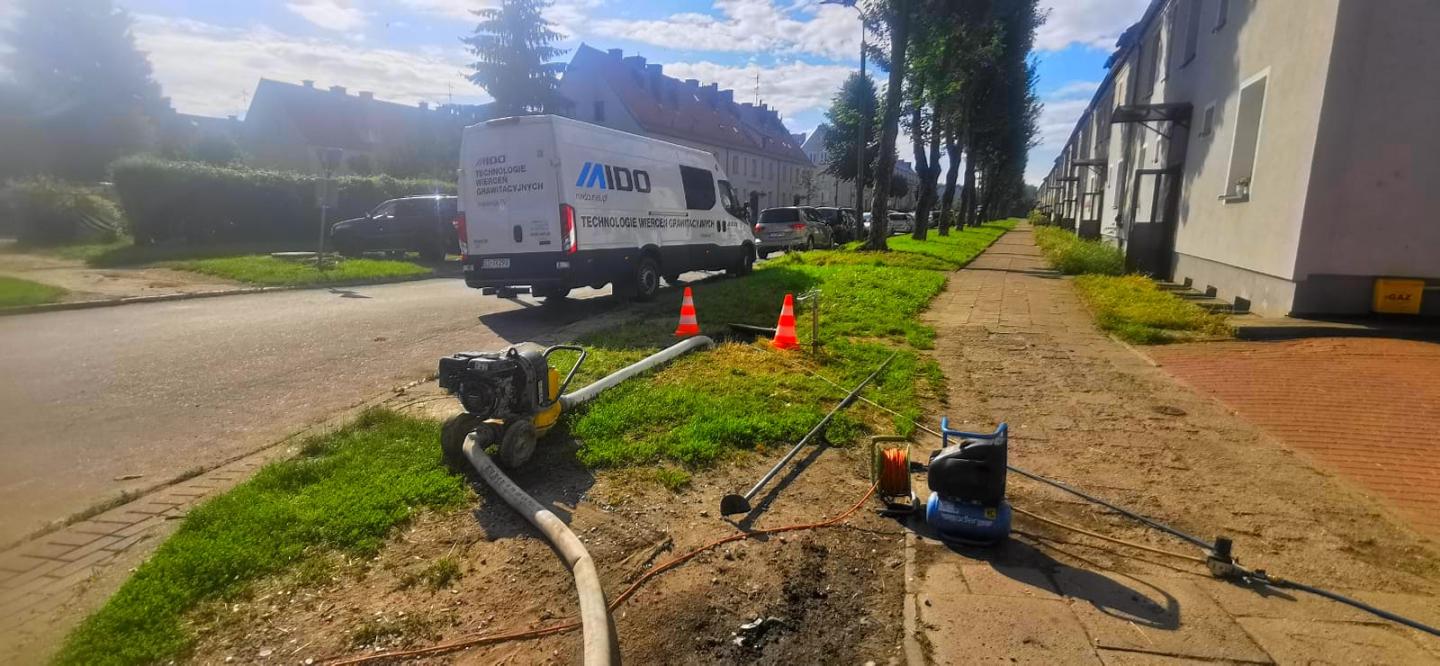
In the center of Elbląg, on Stefana Okrzei Street, the MIDO team faced a task that required both precision and a rapid response. A damaged 200 mm vitrified clay sanitary sewer posed a real threat – its poor technical condition threatened not only interruptions in the system's operation but even ground subsidence under nearby buildings.
Renovation under pressure – without shutting down the city
We worked in the area of the WIK back facilities, where continuity of the network's operation was crucial. Long-term closures or excavations were out of the question. To ensure safety and maintain flow, the existing sewer was temporarily switched to a pumping system – which allowed us to carry out the work smoothly without interruptions in wastewater collection.
Modern modular pipe replacing the old vitrified clay pipe
The damaged 200 mm vitrified clay section was replaced with a 200 mm PP modular pipe. The modular technology enables quick and watertight connection of elements in confined spaces, minimizing disturbance to the surroundings. We didn't need to construct any new launch chambers – we used existing manholes, which shortened the work time and reduced costs.
Narrow conditions, difficult access – we solved it in one day
The biggest challenge turned out to be an undersized manhole cover that prevented the introduction of standard equipment. It was necessary to remove the paving stones and enlarge the access accordingly. We carried out the whole operation with full site protection, and after completing the work we restored the surface to its original condition – as if we had never been there.
Ecology and safety above all
- no need for deep excavations → less environmental impact,
- no traffic shutdowns → time savings for residents,
- rapid response → minimized risk to nearby buildings.
The entire renovation, including site preparation, took one day.
Why is this so important?
In places where underground infrastructure is decades old, failures can occur suddenly and pose a threat to residents' safety. Trenchless technology using our Gravity Drilling Rig allows for immediate and effective response without creating chaos in the city, without interfering with existing infrastructure, and in a way that does not disrupt the peace and daily life of the city's residents.
Location: Elbląg, Stefana Okrzei Street
Pipe diameter: 200 mm PP
Duration: 1 day
Technology: Gravity Drilling Rig





